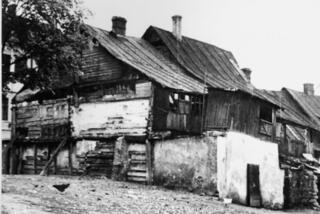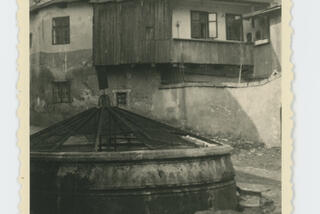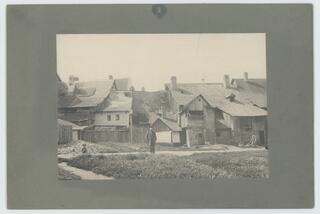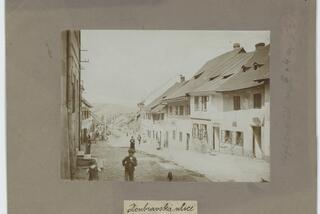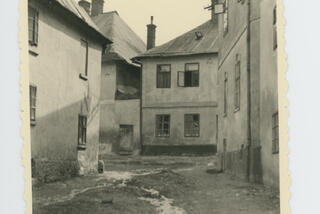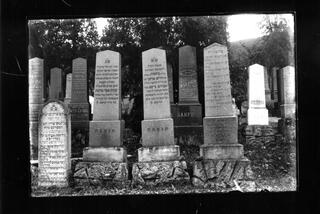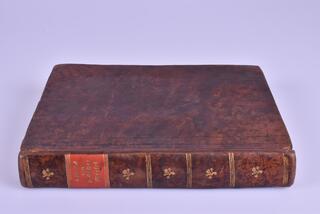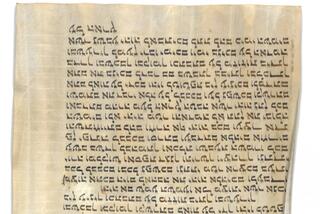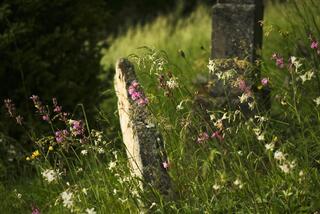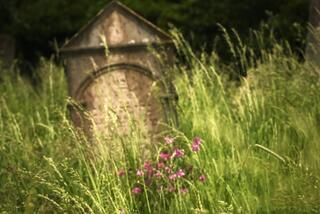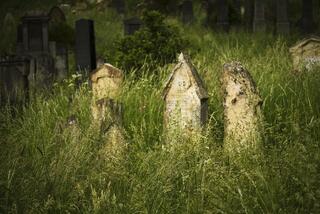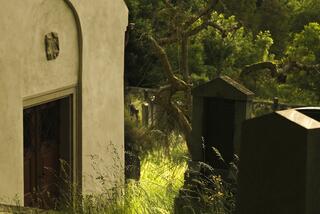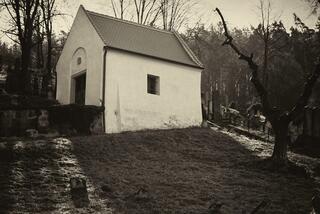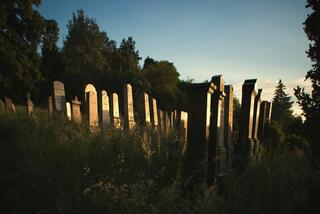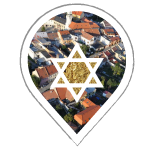
Living in the Jewish quarter, condominium
Living conditions in the Boskovice ghetto were, as in similar towns with Jewish settlements, considerably cramped and hygienically unsatisfactory.
One of the reasons was that from the 18th century the so-called family laws came into force, which reduced the number of legally living Jewish families. An adult Jew could only marry and start a family if the number of family units in the given place fell below the prescribed maximum number (so-called numerus clausus), either by the death of the head of the family (familianta) or by permanent eviction of the family. A number of applicants were already waiting for the vacant position, intending to start a family, who had to meet a number of constantly changing criteria, such as marital origin, age, birthright, education, minimum amount of property, etc. The allocation of the released so-called family number was decided by either the Jewish self-government, the nobility, or the administrative authorities. Corruption, patronage and manipulation of candidates' queues used to be commonplace.
The basic condition for obtaining the family right was the ownership of the property, which could have been only one room. The boundaries of the ghetto were usually definitive, so it happened that in most houses more families lived together, houses were divided and extensions were built.
In Boskovice, a typical place marked by this phenomenon was street V síňkách, situated in today's gap below street Bílková.
J. Bránský describes Jewish Boskovice in the middle of the 18th century as follows:
"The houses were of different sizes, the blocks were irregular, the builders used the unevenness of the terrain economically and smartly. With some exceptions, the housing development in the ghetto is smaller than in a Christian city, the houses are mostly one-storey, the ground floor and often the basement are intensively used for commercial purposes as "kvelby". Gardens usually do not exist, many people have to settle for dark backyards. One or more owners usually live in one house, each of whom owns a certain part of the house. The owner of the house on the first floor was often forced to add stairs from the street to be able get to his apartment at all. The division of houses between different owners created so-called condominiums. The owner of one part of the house became the owner of another part in a neighboring house in order to enlarge his apartment - for example, by only one room, where he created a door to the connecting apartment. "
Kašna smrti nacházející se v židovské čtvrti dodnes svědčí o problémech, se kterými se přeplněné ghetto potýkalo: znečištění zdrojů pitné vody měl za následek časté epidemie.
A fountain of Death is located in Jewish Quarter and it is great evidence of problems the Jewish quarter had to face: contamination of water and connected with epidemics.
Photo from 1930s
A scroll with a prayer was placed into mezuzah, a small box that was fixed near doors of Jewish houses.
Text of the prayer:
Hear, O Israel, the L-rd is our G‑d, the L-rd is One.
And thou shalt love the L-rd thy G-d with all thy heart, and with all thy soul, and with all thy might. And these words that I command thee this day, shall be upon thy heart. And thou shalt teach them diligently unto thy children, and thou shalt talk of them when thou sittest in thy house, and when thou walkest by the way, and when thou liest down and when thou risest up. And thou shalt bind them for a sign upon thy hand, and they shalt be for frontlets (totafot) between thine eyes. And thou shalt write them upon the doorposts (mezuzoth) of thy house, and upon thy gates.
And it shall come to pass, if ye shall hearken diligently onto My commandments which I enjoin upon thou this day, to love the L-rd your G‑d and to serve Him with all your heart and with all your soul, that I will give the rain of your land in its season, the former rain and the latter rain, that thou mayest gather in thy corn, and thy wine, and thine oil. And I will give grass in thy fields for thy cattle, and thou shalt eat and be satisfied. Take heed to yourselves, lest your heart be deceived, and ye turn aside and serve other gods, and worship them; and the anger of the Lord be kindled against you, and He shut up the heaven, so that there shall be no rain, and the ground shall not yield her fruit; and ye perish quickly from off the good land which the L‑rd giveth you. Therefore, shall ye lay up these My words in your heart and in your soul; and ye shall bind them for a sign upon your hand, and they shall be for frontlets (totafot) between your eyes. And ye shall teach them your children, talking of them, when thou sittest in thy house, and when thou walkest by the way, and when thou liest down, and when thou risest up. And thou shalt write them upon the doorposts (mezuzoth) of thy house, and upon thy gates; that your days may be multiplied, and the days of your children, upon the land which the L-rd swore onto your fathers to give them, [for as long] as the days of the heavens about the earth.”
Mezuzah is a small box that was fastened on the doorframes of Jewish houses or shops. The box contains a piece of parchment where verses from Thorah are written. This Mezuzah is abundantly decorated. When Jews enter the house, they touch Mezuzah with their fingers and then kiss them. The parchment must be checked by a qualified person in 7 years.
Mezuzah is a small box that was fastened on the doorframes of Jewish houses or shops. The box contains a piece of parchment where verses from Thorah are written. Mezuzah can be made of several materials and decorated, but this one is quite simple and made of metal. When Jews enter the house, they touch Mezuzah with their fingers and then kiss them. The parchment must be checked by a qualified person in 7 years.
Archiv MRB.

